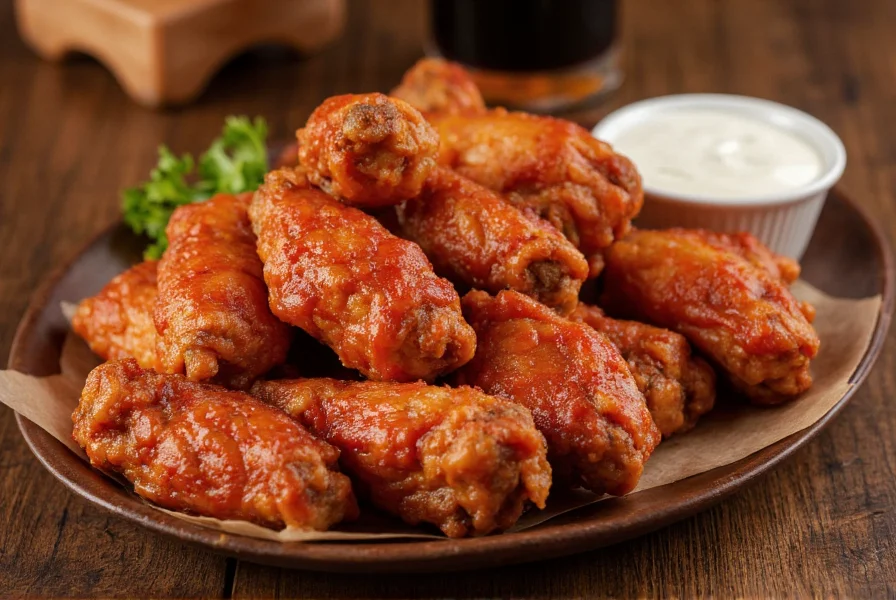Chicken wings transformed through the magic of chili peppers have become a global phenomenon, transcending their bar-food origins to grace gourmet menus and home kitchens alike. Understanding what makes exceptional chili wings requires examining both technique and tradition across culinary cultures.
The Essential Components of Perfect Chili Wings
Creating restaurant-quality chili wings at home starts with understanding the three critical elements that define this dish: texture, heat profile, and flavor complexity. The crispiest results come from a two-step cooking process—baking first to render fat and dry the skin, then finishing under the broiler or in an air fryer for maximum crunch. This method eliminates the need for deep frying while achieving superior texture.
Heat management separates good chili wings from great ones. Professional chefs recommend using multiple chili sources to create layered heat—fresh chilies for bright, immediate spice; chili flakes for medium-temperature warmth; and chili oil for lingering finish. The best chili wings recipe balances these elements with complementary ingredients that enhance rather than mask the chili flavor.
| Chili Type | Heat Level (Scoville) | Best Use in Wings |
|---|---|---|
| Fresh Thai Bird's Eye | 50,000-100,000 | Finely minced in sauce for immediate heat |
| Crushed Red Pepper | 15,000-25,000 | Dry rub or finishing spice |
| Sichuan Chili Oil | 5,000-15,000 | Base for sauce with numbing peppercorns |
| Smoked Chipotle | 2,500-8,000 | For southwestern-style variations |
Regional Variations Worth Exploring
While American-style buffalo wings dominate many menus, authentic chili wings showcase remarkable regional diversity. Sichuan dry chili wings (干锅鸡翅) feature mouth-numbing mala seasoning with toasted chilies and Sichuan peppercorns. Thai basil chili wings incorporate holy basil and fish sauce for aromatic complexity. Even Italian cuisine offers a version with Calabrian chilies and garlic.
For those seeking spicy chili wings without deep fryer equipment, the oven-broiler method delivers exceptional results. Pat wings dry thoroughly, toss with baking powder (not soda) for pH balance, arrange on a wire rack over a baking sheet, and bake at 425°F for 45 minutes. Flip halfway through, then finish under the broiler for 3-4 minutes until golden brown.

Building Flavor Complexity in Your Sauce
The sauce makes or breaks chili wings. Professional kitchens build flavor in stages: first sautéing aromatics (garlic, ginger, shallots), then adding chili components, followed by liquid elements (soy sauce, rice vinegar, honey), and finishing with fresh herbs. The chili wings sauce recipe below creates a balanced profile that's spicy but not overwhelming:
- 3 tbsp chili oil (infused with花椒 for authentic Sichuan flavor)
- 2 tbsp light soy sauce
- 1 tbsp rice vinegar
- 1½ tbsp honey or maple syrup
- 4 cloves garlic, minced
- 1 tbsp fresh ginger, grated
- 1-2 fresh red chilies, thinly sliced
- 1 tsp sesame oil
- Green onions for garnish
Simmer ingredients for 5 minutes until slightly thickened, then toss with freshly cooked wings. For mild chili wings for kids, reduce chilies to ½ and increase honey to 2 tbsp while adding 1 tbsp lime juice for brightness without heat.
Avoiding Common Preparation Mistakes
Many home cooks make critical errors that compromise their how to make crispy chili wings results. The most frequent issues include:
- Skipping the drying step - Wet wings steam instead of crisping
- Overcrowding the baking sheet - Prevents proper air circulation
- Adding sauce too early - Causes sogginess; always toss wings in sauce immediately before serving
- Using only one chili source - Creates flat, one-dimensional heat
- Not resting wings after cooking - 5 minutes allows juices to redistribute
For gluten-free versions, substitute tamari for soy sauce. Those seeking authentic Chinese chili wings should source proper Sichuan peppercorns (hua jiao) which provide the characteristic numbing sensation that complements the chili heat.

Serving Suggestions and Pairings
Chili wings shine when paired with cooling accompaniments that balance the heat. Traditional pairings include cucumber salad with rice vinegar, steamed jasmine rice, and Chinese broccoli. Beverages should contrast the spice—mango lassi, jasmine tea, or a crisp lager work perfectly. For entertaining, arrange wings on a platter with lemon wedges, extra chili flakes, and small bowls of cooling dips like yogurt-cucumber raita.
Frequently Asked Questions
How can I make chili wings crispy without deep frying?
The most reliable method is baking wings at 425°F on a wire rack for 45 minutes (flipping halfway), then finishing under the broiler for 3-4 minutes. Patting wings completely dry before seasoning and adding 1 teaspoon baking powder per pound helps draw out moisture for maximum crispness without deep frying.
What's the difference between chili wings and buffalo wings?
Chili wings feature Asian-inspired flavors with multiple chili sources, garlic, ginger, and often sweet elements like honey. Buffalo wings use cayenne-based hot sauce with vinegar and butter, creating a tangier, less complex heat profile. Authentic chili wings emphasize layered spice rather than pure heat intensity.
How do I adjust the heat level in chili wings?
Control heat by varying chili types and preparation. Remove seeds and membranes from fresh chilies to reduce heat by 50%. For milder wings, use only chili oil without fresh chilies. To increase heat, add a pinch of cayenne or extra fresh chilies. Remember that heat perception develops over 30 seconds, so taste test cautiously when adjusting.
Can I prepare chili wings ahead of time?
Yes, but with proper technique. Cook wings completely, then store refrigerated without sauce for up to 24 hours. Re-crisp in a 400°F oven for 10-12 minutes before tossing in freshly made sauce. Never apply sauce more than 15 minutes before serving to maintain crisp texture. The sauce itself can be made 2 days ahead and stored refrigerated.











 浙公网安备
33010002000092号
浙公网安备
33010002000092号 浙B2-20120091-4
浙B2-20120091-4